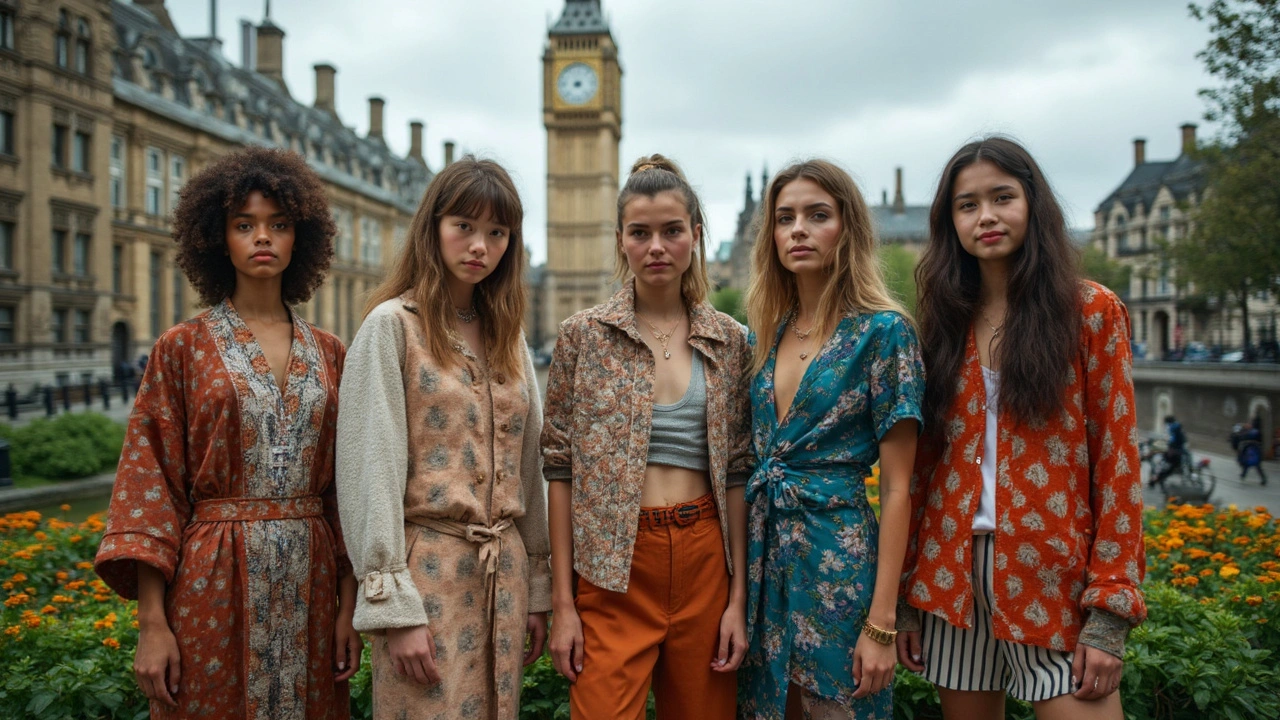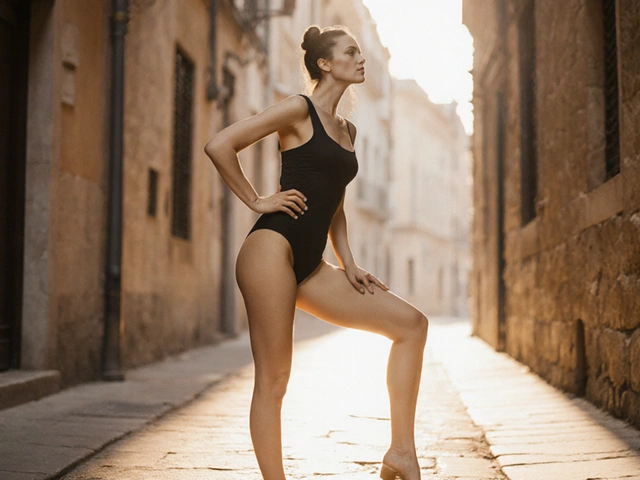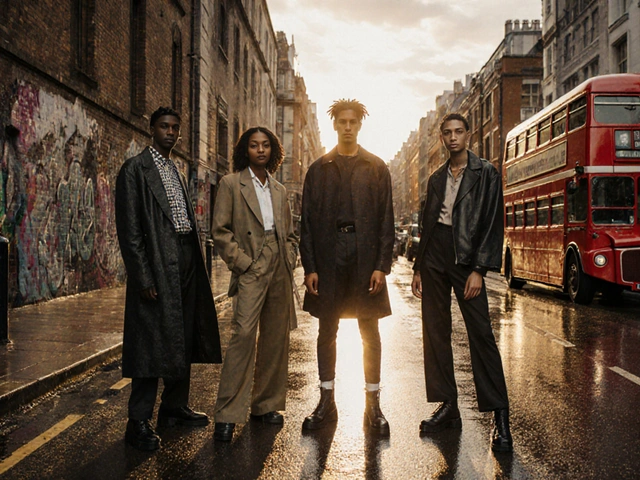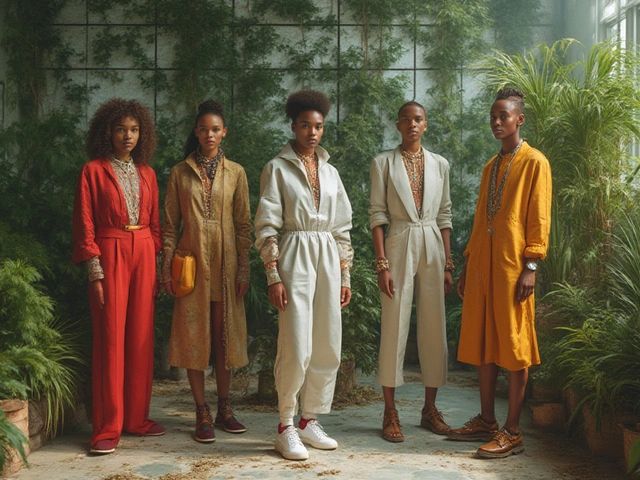If you thought fashion was all about new trends and fast shopping sprees, you haven’t been watching what’s happening in the UK. Over the past few years, British models have stepped way beyond runways to push for a fashion world that’s less wasteful and a lot more responsible. It’s not just talk—they’re making real changes that anyone can learn from.
Ever wonder how a model who spends her life surrounded by clothes deals with the ugly side of fashion, like throwaway trends and plastic packaging? For many UK models, it starts at home. They aren’t shy about repeating outfits or sharing where their clothes come from. Even small choices, like swapping out a haul for upcycling, make a difference—and inspire fans to do the same.
So, if you want to look good with a clear conscience, this article will show you some concrete, everyday moves you can borrow from the pros. There’s no need to turn into a full-on eco-warrior overnight, but why not give your closet a fresh start with a few of their simple, smart swaps?
- How UK Models Shape Green Trends
- Personal Initiatives That Make a Difference
- Collaboration with Eco-Forward Brands
- Tips for Your Own Sustainable Wardrobe
How UK Models Shape Green Trends
Models in the UK aren't just photo props—they’re rule-breakers constantly calling attention to how fashion can hurt or help the planet. You’ll see a growing crowd of familiar faces ditching fast fashion brands and demanding real change on social media. Just look at Adwoa Aboah, who’s never shy about supporting climate marches and calling for more transparency. Edie Campbell, too, talks openly about the need for fewer, better-made clothes and even hosts panel talks on fashion waste. These aren’t rare cases. Scroll through Instagram or catch interviews, and it’s clear: models are talking about ethics, not just lipsticks and heels.
Many UK models now work only with brands that have solid eco-credentials. Take Arizona Muse. She’s famous not just for runways but for grilling designers about their supply chain and pushing them to go organic. And not just in private—she’s gone public about refusing gigs with companies that greenwash or ignore the problem. According to the British Fashion Council, about 35% of top UK models in 2024 openly listed sustainability as a dealbreaker before signing contracts.
Check out this snapshot of shifts in the UK fashion scene, driven by model activism:
| Year | % UK Models Prioritizing Green Brands | Major Sustainable Fashion Events Joined |
|---|---|---|
| 2021 | 22% | 5 |
| 2022 | 27% | 8 |
| 2023 | 31% | 11 |
| 2024 | 35% | 14 |
This is more than a trend. When a UK model stands up for sustainable fashion, brands notice—big time. The market follows, and suddenly, what looked like a niche idea is everywhere. Bottom line: when a model chooses recycled denim or upcycled shoes, thousands of fans notice, talk about it, and want it, too. That’s real power to change the industry from the inside out.
If you want to size up the influence, just look at London Fashion Week. In the past three years, over half the shows have highlighted at least one eco-friendly collection, partly because models themselves keep pushing for it. These models aren’t just faces—they’re the loud voices behind many brands’ green turnarounds.
Personal Initiatives That Make a Difference
UK models aren’t waiting around for fashion to clean up its act. They’re rolling up their sleeves and making changes in their own lives—and showing everyone how simple it can be. For example, Adwoa Aboah, one of Britain’s most influential models, talks openly about shopping second-hand and even shares thrift hauls on her platforms. She says, “It’s not just about looking good, it’s about knowing where your stuff comes from and who made it.”
Another way these models walk the walk? They cut down on their own carbon footprint by using rental fashion services. Stella Tennant was known for repeating outfits on the red carpet to fight the throwaway approach. She even chimed in during a 2019 interview:
“I hope more people will ask themselves if they really need to buy new, or if they can use what they already have.”
Small changes add up, and the numbers prove it. By focusing on re-wearing clothes and buying less, models are helping to change the demand for fast fashion brands, which produce over 92 million tonnes of textile waste every year. Just think about this:
| Initiative | Potential Impact |
|---|---|
| Wearing outfits again | Saves hundreds of liters of water per garment |
| Choosing natural fabrics | Reduces microplastic pollution in oceans |
| Thrifting or swapping | Keeps clothes out of landfill |
If you want ideas to copy, here’s what UK models recommend:
- Start by looking at what you already own—mix and match in new ways before buying more.
- Try vintage or charity shops for unique looks and lower environmental impact.
- If you’re tempted by something new, check for brands that use eco-friendly materials or support fair wages.
The key takeaway? UK models are getting creative with their choices, and you can too. Every little change helps turn the tide on wasteful habits.
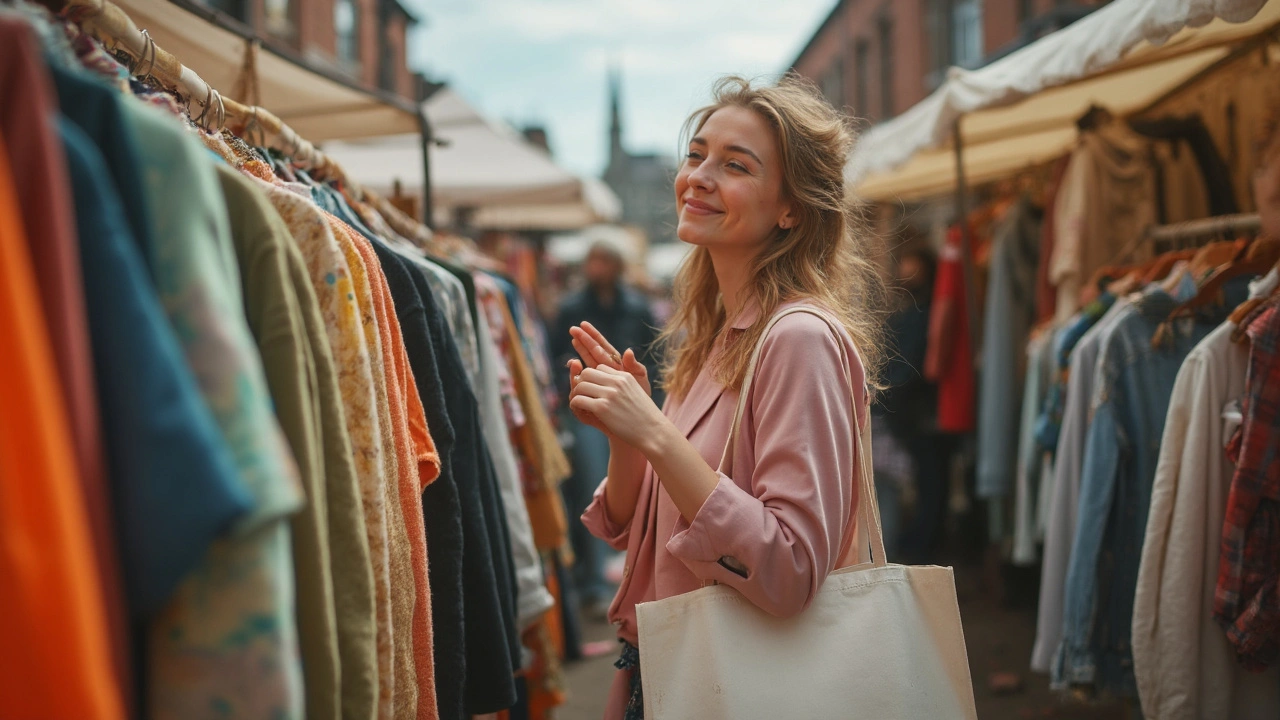
Collaboration with Eco-Forward Brands
One of the biggest changes happening right now is how UK models are teaming up with eco-friendly brands. Big faces like Adwoa Aboah and Stella Tennant (who was passionate about ethical fashion before her passing) have taken a clear stand, working only with companies that match their own values about the planet. If you scroll through their campaigns, you’ll see them wearing recycled denim, organic cotton, and even dresses made from ocean plastic.
Take Burberry, for instance. Not so long ago, they pledged to go carbon neutral and cut out the practice of burning unsold clothes. Models like Cara Delevingne helped drive that shift, using her huge social media following to call out the need for real action. It’s proof that even luxury brands are listening when models speak up.
Some stats paint an interesting picture. In 2024, over 53% of UK fashion campaigns featured at least one model promoting a sustainable brand, according to the British Fashion Council. Compare that to just 21% five years ago. This change didn’t just happen on its own. It’s models using their voice, showing that you can care about style and the environment at the same time.
| Year | UK Fashion Campaigns Featuring Sustainability |
|---|---|
| 2019 | 21% |
| 2021 | 37% |
| 2024 | 53% |
Plenty of UK models have written or spoken openly about checking a brand’s eco-credentials before agreeing to a photoshoot. They’ll ask questions like: Is this outfit made from recycled or organic fabric? Is the supply chain ethical? Even if you’re not a superstar, you can steal this move—just check for certifications or shop brands that publish where their stuff comes from.
- Follow models and influencers who openly support sustainable labels—they often share honest reviews and real behind-the-scenes info.
- Look for brands with a public commitment to fair pay, safe working conditions, and low-impact packaging.
- If a model promotes a brand’s green efforts, check the details—they usually reveal the best new practices first.
All this isn’t just marketing. It’s changing what’s popular, what gets made, and what ends up in people’s wardrobes. The UK models championing eco-brands are showing that you don’t have to give up great style to make a positive difference.
Tips for Your Own Sustainable Wardrobe
Building a sustainable wardrobe doesn’t have to be overwhelming or expensive. UK models are showing followers on social media that change can start with what you already have. It’s about making choices that are good for the planet, your wallet, and your closet. These tips will actually get you started.
The first step is to shop less, but shop smarter. The British Fashion Council says buying just one special item to wear at least 30 times can reduce your fashion footprint more than buying a bunch of cheap things you’ll only wear once. If it doesn’t pass the 30 wears test, think twice.
- UK models are big on second-hand finds. Online resale platforms like Depop, Vinted, and even eBay have made it easier than ever to find good stuff with history.
- Check the label before you buy. Look for clothes made from organic cotton, recycled polyester, or Tencel. These materials use less water and energy compared to regular options.
- Take care of what you actually own. Washing clothes in cold water and air-drying them can make your favorites last longer. Washing less means fewer microplastics end up in water streams, too.
- Join local clothes swaps or even start one with friends. You’ll be surprised how new-to-you items can freshen up your look.
According to a 2024 UK government report, each person in the UK buys an average of 26.7kg of new clothing each year—more than any other country in Europe. Cutting down just a bit can have a big impact on waste and carbon footprint.
| Action | Potential Impact |
|---|---|
| Wearing clothing 50% longer | Reduces carbon emissions by 44% |
| Buying second-hand | Reduces water footprint by 30% |
| Swapping with friends | Keeps 21 million tons of textiles out of UK landfills per year |
If you’re looking for a motto, take this advice from Stella McCartney, who’s a true leader in sustainable fashion:
"The most sustainable garment is the one already in your wardrobe."
Swapping, supporting eco brands, or simply making clothes last longer—these moves aren’t just good for the planet. They’re also a solid way to carve out your own style, just like the runway stars.
